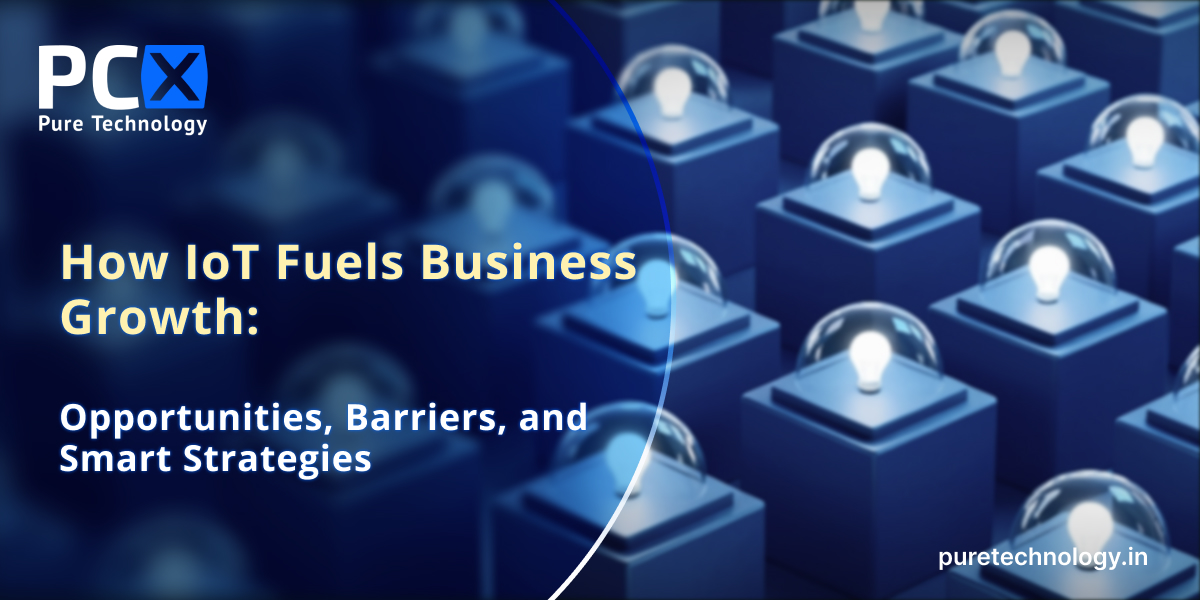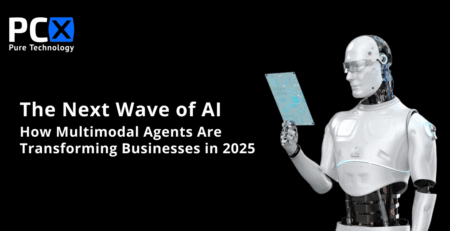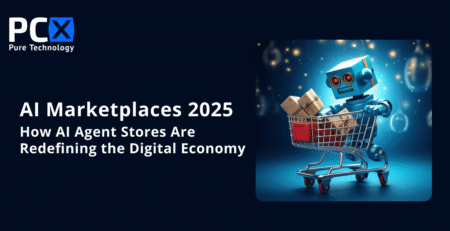How IoT Fuels Business Growth: Opportunities, Barriers, and Smart Strategies
The Internet of Things (IoT) has moved far beyond early adoption—it is now a core enabler of digital transformation across industries such as manufacturing, healthcare, logistics, retail, and smart cities. By integrating connected devices and intelligent systems into operations, businesses are unlocking new levels of efficiency, automation, and data-driven decision-making.
From remote monitoring and predictive maintenance to real-time analytics and smart customer engagement, IoT is reshaping how organizations operate and compete. However, businesses also face hurdles such as data security, system integration, interoperability, and compliance challenges. To fully capitalize on IoT, companies must implement scalable, secure, and strategy-driven adoption plans.
This article explores the state of IoT in business, the opportunities it creates, the challenges companies must overcome, and practical strategies for successful IoT implementation.
1. The Current State of IoT in Business
IoT is no longer just an emerging technology—it’s a strategic pillar of Industry 4.0. Organizations that leverage IoT for automation, resource optimization, and customer engagement are gaining measurable competitive advantages.
Key applications include:
- Smart factories improving efficiency with predictive analytics.
- Healthcare IoT for patient monitoring and data-driven treatment.
- Logistics IoT enabling real-time fleet tracking and route optimization.
- Retail IoT personalizing customer experiences through connected devices.
Yet, despite rapid adoption, companies still encounter barriers such as user adoption, system integration issues, and security risks. The key lies in secure, scalable, and data-driven IoT strategies.
1.1 Enhancing Operational Efficiency and Resource Optimization
IoT helps businesses streamline operations by enabling automation, predictive maintenance, and remote monitoring.
How IoT Drives Efficiency:
✅ Automated processes that self-adjust in real-time.
✅ Remote control and monitoring across multiple facilities.
✅ Predictive analytics reducing downtime and repair costs.
Example: A manufacturing plant uses IoT-enabled machine sensors to analyze production workflows, reducing waste while improving output efficiency.
1.2 Data-Driven Decision Making and Visualization
IoT generates massive amounts of real-time data that can be transformed into actionable insights.
Benefits of IoT Analytics:
✅ Dashboard-based data visualization for quick decisions.
✅ Accurate asset tracking across supply chains.
✅ Reliable data integrity ensuring trust in insights.
Example: A logistics provider integrates GPS-enabled IoT sensors to monitor fleet locations and optimize routes, cutting delays and reducing costs.
1.3 Unlocking New Business Models and Revenue Streams
IoT isn’t just about cost savings—it enables entirely new revenue models.
Business Model Innovations with IoT:
✅ Subscription-based services for remote monitoring.
✅ Smart product integrations (connected appliances, wearables).
✅ AI-driven personalization based on real-time customer behavior.
Example: A smart home company offers IoT-enabled security locks bundled with subscription-based monitoring services, generating recurring revenue.
1.4 Omnichannel & Multi-Experience (MX) Customer Engagement
Today’s customers expect seamless experiences across mobile, wearables, kiosks, and voice assistants. IoT plays a crucial role in delivering this.
How IoT Elevates Customer Experience:
✅ Interoperability across devices.
✅ AI-powered personalization using customer data.
✅ Secure and efficient device management.
Example: A retail chain integrates IoT with its loyalty app, sending personalized in-store promotions via smart displays and mobile push notifications.
2. Business Opportunities Enabled by IoT
- Operational efficiency through automation and real-time monitoring.
- Data insights that enhance decision-making.
- New revenue streams via subscription-based IoT services.
Customer-centric models powered by personalization and connected devices.
3. Key Challenges in IoT Adoption
Despite its potential, IoT adoption faces critical barriers:
3.1 Security and Data Integrity Risks
With billions of devices connected, cybersecurity is a top concern.
✅ Enforce encryption and strong device authentication.
✅ Conduct regular audits to secure networks.
3.2 Data Management and Scalability
IoT generates massive data volumes that must be stored and analyzed.
✅ Leverage cloud or edge computing.
✅ Use advanced data visualization tools.
3.3 Interoperability and System Integration
Different IoT devices often fail to integrate seamlessly.
✅ Adopt standardized protocols.
✅ Use APIs for smooth cross-platform communication.
3.4 Compliance and Regulations
Industries like healthcare and finance must adhere to strict compliance frameworks.
✅ Align IoT systems with GDPR, HIPAA, and industry-specific regulations.
3. Key Challenges in IoT Adoption
Despite its potential, IoT adoption faces critical barriers:
3.1 Security and Data Integrity Risks
With billions of devices connected, cybersecurity is a top concern.
✅ Enforce encryption and strong device authentication.
✅ Conduct regular audits to secure networks.
3.2 Data Management and Scalability
IoT generates massive data volumes that must be stored and analyzed.
✅ Leverage cloud or edge computing.
✅ Use advanced data visualization tools.
3.3 Interoperability and System Integration
Different IoT devices often fail to integrate seamlessly.
✅ Adopt standardized protocols.
✅ Use APIs for smooth cross-platform communication.
3.4 Compliance and Regulations
Industries like healthcare and finance must adhere to strict compliance frameworks.
✅ Align IoT systems with GDPR, HIPAA, and industry-specific regulations.
Call us for a professional consultation












Leave a Reply